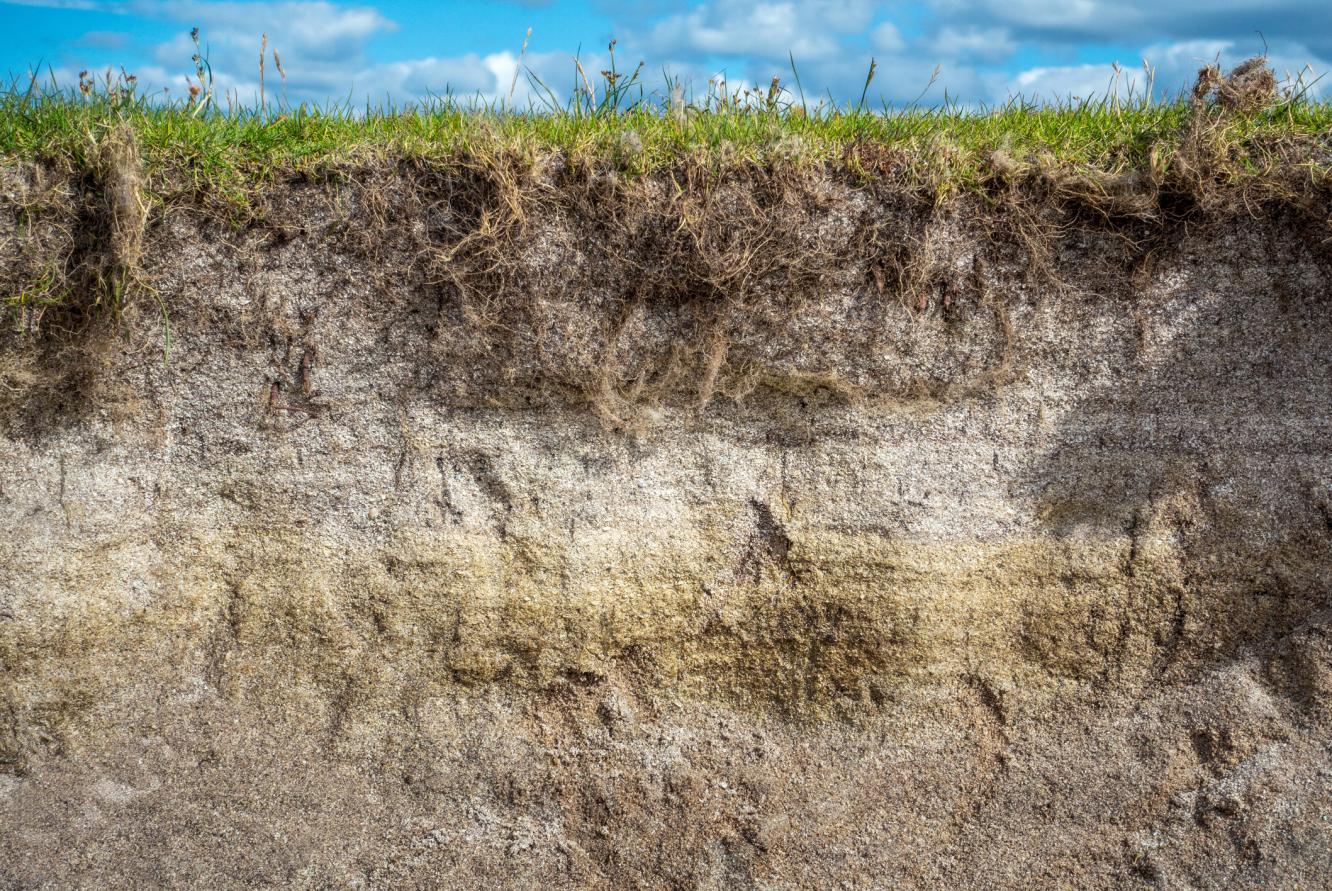Environmental Transformations and Interactions
Microbial Communities Vary Widely Underground, Even When Spatially Close
Study finds that geochemistry and hydrogeology greatly influence microbial community type and function, even when those communities are only 10 cm apart.

Microbial communities congregate underground, but scientists discovered that geochemistry and hydrogeology influence what communities are present and how they function, even when they are very close together. (Photo by georgeclerk | iStock)
The Science
The subsurface critical zone extends from the ground surface down to unweathered bedrock. This zone teems with microorganisms, harboring more than half the world’s population. Yet little is known about how these microbial communities differ based on geochemical and hydrogeologic characteristics. In a new study, a multi-institutional team of scientists integrated information about genetics and chemistry to explore the links between geochemistry, hydrogeology, microbial community structure, and metabolism from the top to the bottom of the zone. The results showed that microbes separated by only 10 to 20 cm in depth can be as distinct from each other as they are from communities thousands of kilometers away.
The Impact
Microbes living in the subsurface critical zone form complex communities. These communities can control key ecological processes, such as the movement of carbon and nitrogen through subsurface soils, groundwater, and the environment. Studies that can correlate microbial community structure, functions, and geochemical factors, including movement of natural organic carbon, will help build the fundamental understanding of microbial ecology and biogeochemistry in the subsurface. This research will also be useful for developing conceptual and numerical models that can predict nutrient turnover in these environments, benefiting both the cultivation of bioenergy crops and the sequestration of carbon.
Summary
A multi-institutional team of scientists sampled a sediment core from an uncontaminated well at the Oak Ridge Field Research Center in Tennessee. This core vertically spanned soil in the subsurface critical zone, from the shallow subsurface down to the groundwater. Using advanced instrumentation called Fourier-transform ion cyclotron resonance mass spectrometry at EMSL, the Environmental Molecular Sciences Laboratory, a U.S. Department of Energy (DOE) Office of Science user facility, the team studied the genetic composition and the metabolic functions of microbial communities along with the geochemistry and hydrogeology layer by layer. They discovered that the composition of the communities as well as their role in carbon and nitrogen cycling varied even over short vertical distances. Communities of subsurface microbes were found to be highly localized, and they were rarely interconnected. This study demonstrates that sediment geochemistry and hydrogeology are vital in the development and function of distinct microbial populations in the subsurface critical zone.
Contacts
Romy Chakraborty, Lawrence Berkeley National Laboratory, rchakraborty@lbl.gov
Adam Arkin, Lawrence Berkeley National Laboratory, aparkin@lbl.gov
Xiaoqin Wu, Lawrence Berkeley National Laboratory, xiaoqinwu@lbl.gov
Yina Liu, EMSL, yina.liu@pnnl.gov
Funding
This research is part of the ENIGMA (Ecosystems and Network Integrated with Genes and Molecular Assemblies) Science Focus Area funded by the DOE Office of Science, Biological and Environmental Research program. A portion of the research was performed at EMSL, the Environmental Molecular Sciences Laboratory, a DOE Office of Science user facility.
Publication
X. Wu, et al., “Distinct Depth-Discrete Profiles of Microbial Communities and Geochemical Insights in the Subsurface Critical Zone.” Applied and Environmental Microbiology 89, 6 (2023). [DOI: 10.1128/aem.00500-23]

